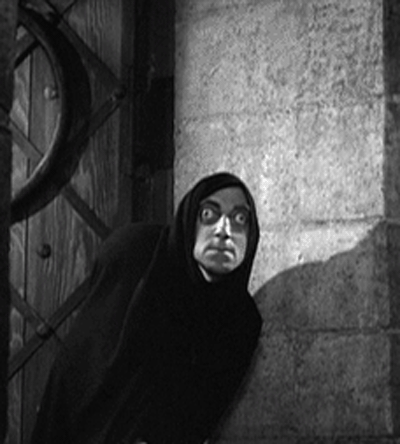Kerri Battles the AFI’s Top 100: #99 – Toy Story

I had mixed emotions about the placement of this film anywhere on the AFI’s list, to be honest. As much as I’ve enjoyed the film on previous viewings, it’s meant to be a kid’s cartoon … isn’t it? It was advertised as such and certainly aimed towards that demographic. Still, I’ve undertaken a daunting challenge and I wasn’t about to start cheating on the second week, so I sat down to watch it for probably the 25th time, this time with the eyes of an AFI judge.

I imagine all of their eyes look something like this.
If you’re unfamiliar with the film Toy Story, odds are you fall into one of three categories: off the grid cave dweller, time traveler from the past, or literal infant. If you do in fact fall into that third category, congratulations on knowing how to read, but where are your parents?! THIS SITE IS NOT FOR YOU, BABY! Get out of here! … Okay, now, for the rest of you, Toy Story is the colorful tale of toys who lead a complex and nuanced life while their boy’s back is turned, or, more accurately, the animated depiction of every nightmare I ever had as a child (I blame that shit on growing up in the 80s with a Teddy Ruxpin). They grapple with the impact they have on the life of their boy, Andy, and the implications of losing their spots on the Hierarchy of Favorites. They also live in crippling fear of the sociopath-in-training next door, who tortures, mutilates, and murders their kind (speaking of absentee parents, that kid was one bad day away from flaying a cat just to see how its insides work). The film was just as entertaining this time around as it was the first time I viewed it and, as with any good for-kids flick, I picked up on even more jokes this time that were slipped in just to keep the adults entertained. Toy Story is precisely what every for-kids flick should — and probably does — aspire to be. But smart, funny, and well-written aren’t enough to get your movie added to the almighty AFI’s list alone. There are criteria, man.
Aside from the obvious American-made and feature-length tick-boxes, your film also has to have won a major award. Toy Story won more than a few, though they’re probably not ones the average joe has ever heard of. It was also nominated for a few Academy Awards, which it did not win, probably because it was up against the Disney Machine for music and The Usual Suspects for Best Screenplay. The Academy, for all of its faults, though, does keep an ace up its sleeve for such occasions. It’s called the Special Achievement award and it’s given for an achievement that makes an exceptional contribution to the motion picture for which it was created, but for which there is no annual award category. So, it’s an award the Academy gives out when there isn’t an award for the feat you’ve accomplished. John Lasseter, director of the film, was given the award for Toy Story because he and his team at Pixar did things with computers that no one had ever seen before. Pixar essentially changed the animation game for everyone, which, of course, is why Disney scooped the company up at the first opportunity — that much talent cannot exist as Disney’s competitor and still be allowed to survive.
A year before Pixar showed the world what it could do, children everywhere thought THIS was impressive.
Okay, so, Pixar changed how children everywhere expected animation to look. That’s nothing short of monumental, but that in and of itself doesn’t necessarily mean Toy Story was a good movie. I mean, Sky Captain and the World of Tomorrow changed forever how I expect green screen scenes to look, but the cast and I are probably the only people who remember that it happened. Hell, if you asked Goopy herself, she’d probably deny she was ever in it and call it the conscious uncoupling of memories from reality. Making a movie for the sole purpose of having a vehicle to show off your cool new tech doesn’t always work out for the best.

Look at those dead, soulless eyes. I bet that exact moment is when she lost her mind and decided to name her first born “Apple.”
Thankfully, that’s not what Pixar did. In fact, Pixar did exactly the opposite. They created an amazing, enchanting, well-written film, then applied cool new tech to it to make it even better. They created well-drawn characters with emotions and backstories. They drew audiences of all ages into a world we could all believe was real, even just for 80 or so minutes. The world, in fact, was so full of detail and minutia that the Toy Story world became the singularity that Big Banged its way into being the universe in which every other Pixar movie somehow exists (lets not think too deeply about Cars or Planes as I’m convinced those movies are actually post-apocalyptic stories in which the transportation became sentient and ate their human slave-masters alive). Pixar achieved the dream — they created a film that irrevocably impacted our pop-culture-hive-mind. No one will ever not get a reference to, “To infinity – and beyond!” No one will ever see that little rag doll Sheriff’s face and ask, “Who is that guy?” Hell, I even know a guy who had “ANDY” with a backwards N tattooed on the bottom of his foot. When he shows it off to people, everyone gets the reference. Pixar has given us characters that will eternally ignite the imaginations of children and adults alike and we all god damned love them for it. When you look at it from that perspective, the AFI didn’t just slap a pretty looking and successful kids movie onto the list. Instead, they included a cultural phenomenon they had overlooked 10 years before. — KS
